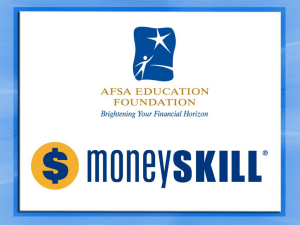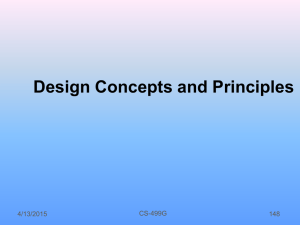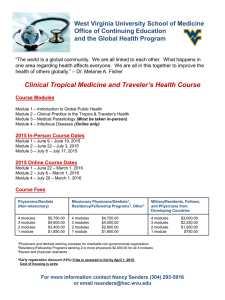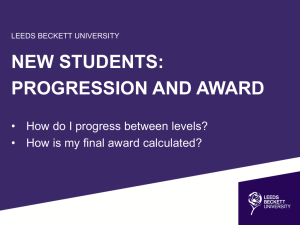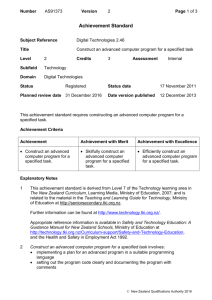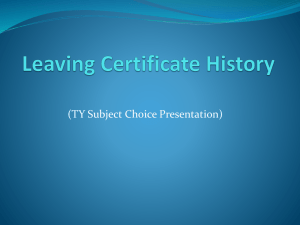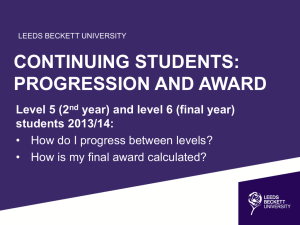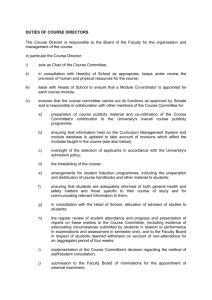Project STEPP Transition Curriculum Background
advertisement
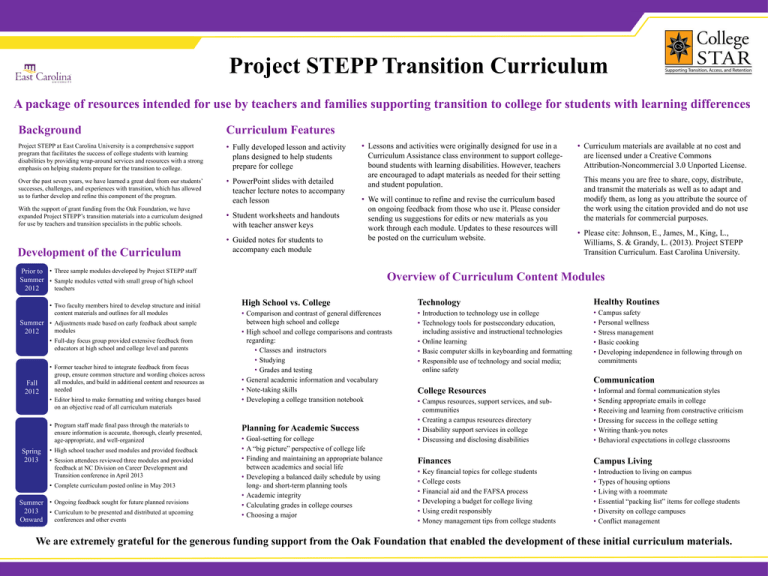
Project STEPP Transition Curriculum A package of resources intended for use by teachers and families supporting transition to college for students with learning differences Background Curriculum Features Project STEPP at East Carolina University is a comprehensive support program that facilitates the success of college students with learning disabilities by providing wrap-around services and resources with a strong emphasis on helping students prepare for the transition to college. • Fully developed lesson and activity plans designed to help students prepare for college Over the past seven years, we have learned a great deal from our students’ successes, challenges, and experiences with transition, which has allowed us to further develop and refine this component of the program. • PowerPoint slides with detailed teacher lecture notes to accompany each lesson With the support of grant funding from the Oak Foundation, we have expanded Project STEPP’s transition materials into a curriculum designed for use by teachers and transition specialists in the public schools. • Student worksheets and handouts with teacher answer keys Development of the Curriculum • Guided notes for students to accompany each module • Lessons and activities were originally designed for use in a Curriculum Assistance class environment to support collegebound students with learning disabilities. However, teachers are encouraged to adapt materials as needed for their setting and student population. • We will continue to refine and revise the curriculum based on ongoing feedback from those who use it. Please consider sending us suggestions for edits or new materials as you work through each module. Updates to these resources will be posted on the curriculum website. Prior to • Three sample modules developed by Project STEPP staff Summer • Sample modules vetted with small group of high school teachers 2012 • Two faculty members hired to develop structure and initial content materials and outlines for all modules Summer • Adjustments made based on early feedback about sample modules 2012 • Full-day focus group provided extensive feedback from educators at high school and college level and parents Fall 2012 • Former teacher hired to integrate feedback from focus group, ensure common structure and wording choices across all modules, and build in additional content and resources as needed • Editor hired to make formatting and writing changes based on an objective read of all curriculum materials • Program staff made final pass through the materials to ensure information is accurate, thorough, clearly presented, age-appropriate, and well-organized Spring 2013 • High school teacher used modules and provided feedback • Session attendees reviewed three modules and provided feedback at NC Division on Career Development and Transition conference in April 2013 • Complete curriculum posted online in May 2013 Summer • Ongoing feedback sought for future planned revisions 2013 • Curriculum to be presented and distributed at upcoming conferences and other events Onward • Curriculum materials are available at no cost and are licensed under a Creative Commons Attribution-Noncommercial 3.0 Unported License. This means you are free to share, copy, distribute, and transmit the materials as well as to adapt and modify them, as long as you attribute the source of the work using the citation provided and do not use the materials for commercial purposes. • Please cite: Johnson, E., James, M., King, L., Williams, S. & Grandy, L. (2013). Project STEPP Transition Curriculum. East Carolina University. Overview of Curriculum Content Modules High School vs. College Technology Healthy Routines • Comparison and contrast of general differences between high school and college • High school and college comparisons and contrasts regarding: • Classes and instructors • Studying • Grades and testing • General academic information and vocabulary • Note-taking skills • Developing a college transition notebook • Introduction to technology use in college • Technology tools for postsecondary education, including assistive and instructional technologies • Online learning • Basic computer skills in keyboarding and formatting • Responsible use of technology and social media; online safety • • • • • Planning for Academic Success • Goal-setting for college • A “big picture” perspective of college life • Finding and maintaining an appropriate balance between academics and social life • Developing a balanced daily schedule by using long- and short-term planning tools • Academic integrity • Calculating grades in college courses • Choosing a major Campus safety Personal wellness Stress management Basic cooking Developing independence in following through on commitments Communication • Campus resources, support services, and subcommunities • Creating a campus resources directory • Disability support services in college • Discussing and disclosing disabilities • • • • • • Finances Campus Living • • • • • • • • • • • • College Resources Key financial topics for college students College costs Financial aid and the FAFSA process Developing a budget for college living Using credit responsibly Money management tips from college students Informal and formal communication styles Sending appropriate emails in college Receiving and learning from constructive criticism Dressing for success in the college setting Writing thank-you notes Behavioral expectations in college classrooms Introduction to living on campus Types of housing options Living with a roommate Essential “packing list” items for college students Diversity on college campuses Conflict management We are extremely grateful for the generous funding support from the Oak Foundation that enabled the development of these initial curriculum materials.
